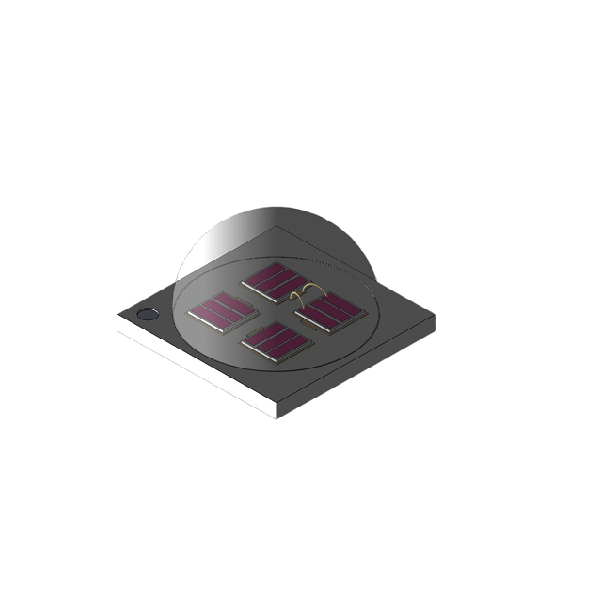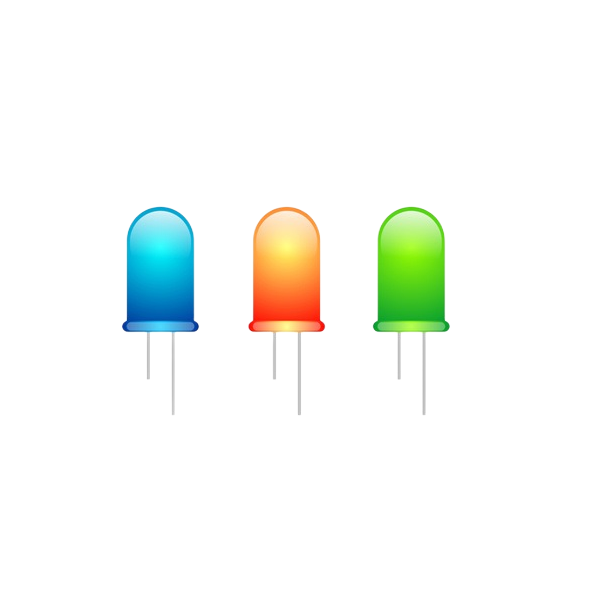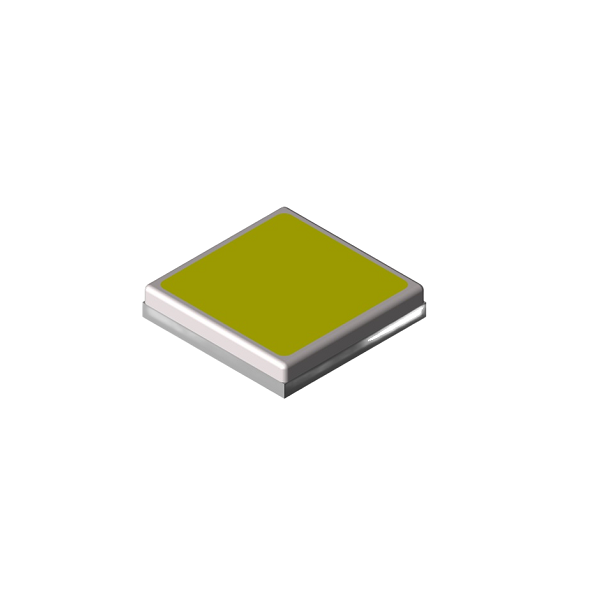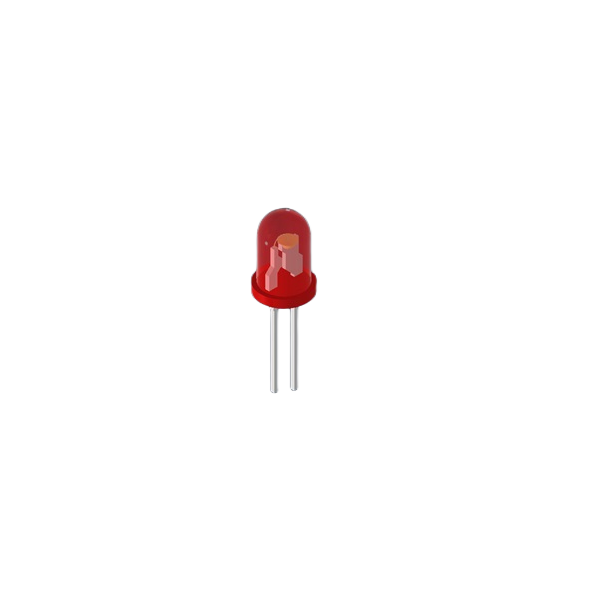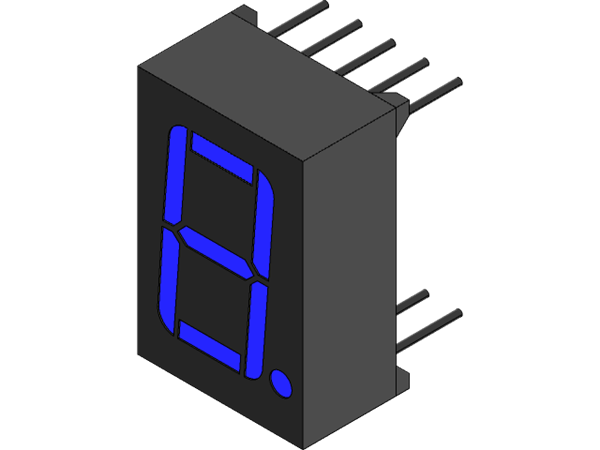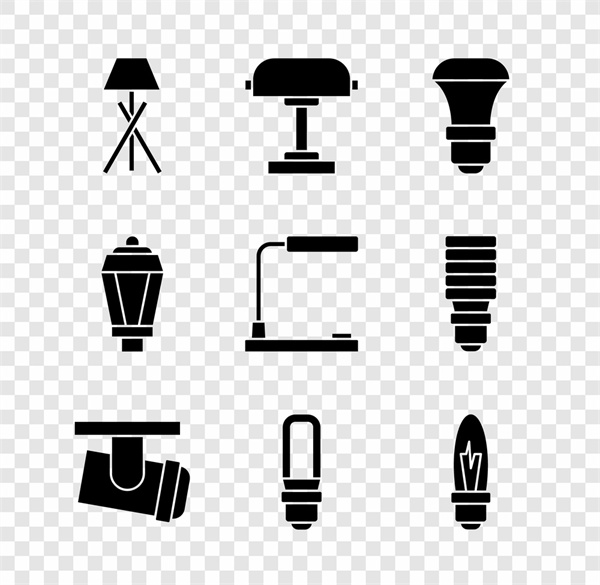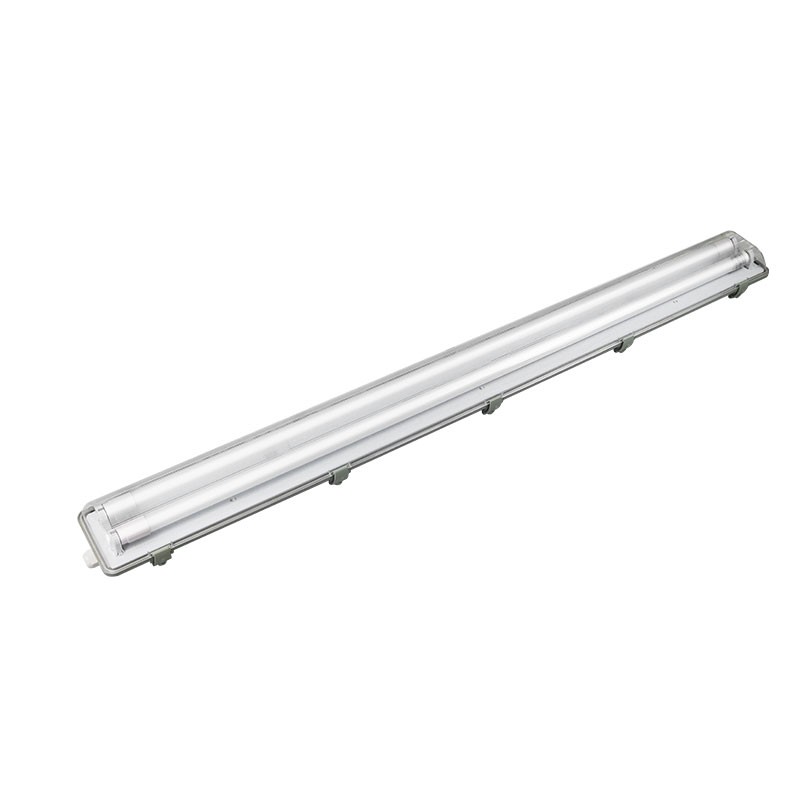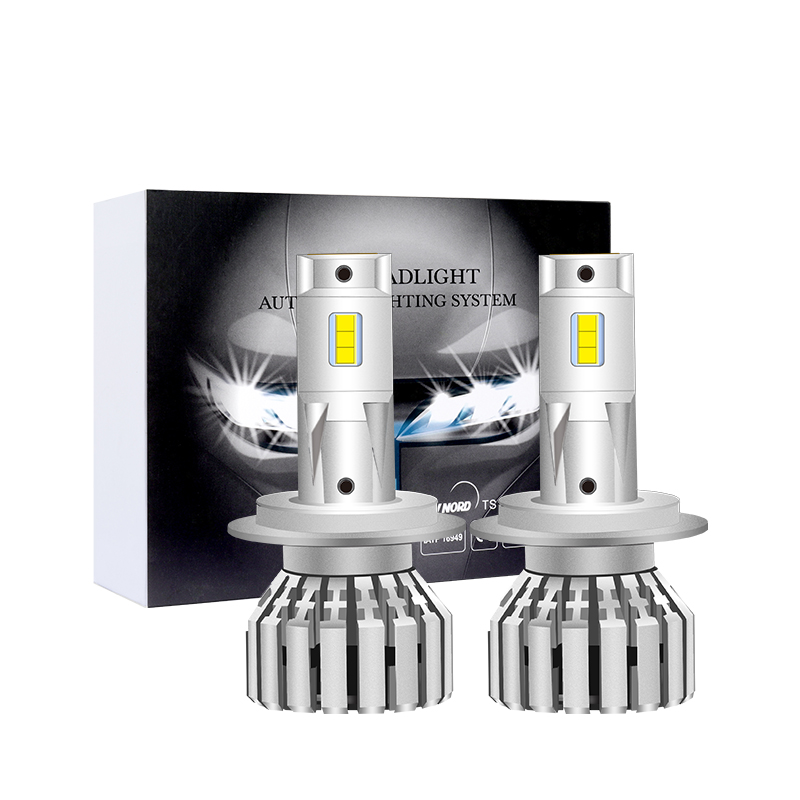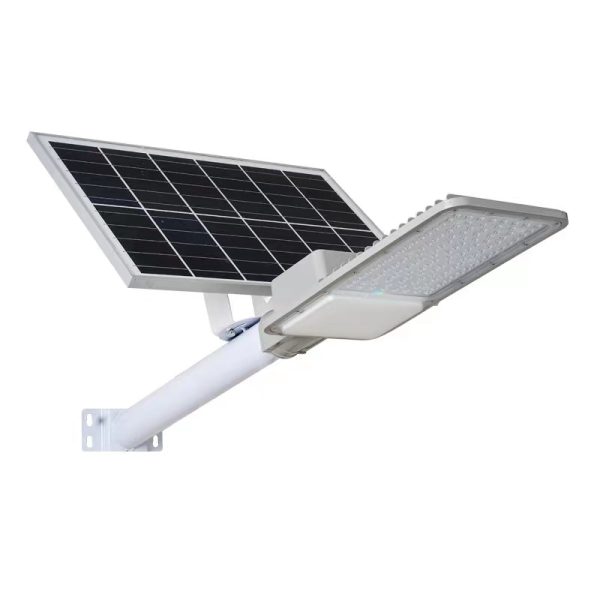It refers to the lighting set up for vehicles, roads and their ancillary facilities. It is used to improve the safety of vehicles driving and pedestrians walking at night and prevent traffic accidents. Reasonable settings can improve traffic conditions, reduce driving fatigue, increase road capacity, and effectively reduce traffic accidents.
Its quality depends on:
(1) The brightness of road lighting. That is, it has enough strength to ensure that vehicle drivers and pedestrians can see obstacles on the road, pedestrians, vehicles and the surrounding conditions on the road.
(2) Uniformity of road lighting. That is, the distribution should be approximately uniform.
(3) The degree of glare interference. That is to effectively control the harmful effects of glare on vehicle drivers and pedestrians.
(4) Guidance of lighting. That is to make appropriate settings according to the road surface conditions, so that vehicle drivers and pedestrians can effectively obtain information such as the direction and inclination of the road ahead, which is especially important for roads with many curves and intersections. Reasonable application of lamps can prevent glare.
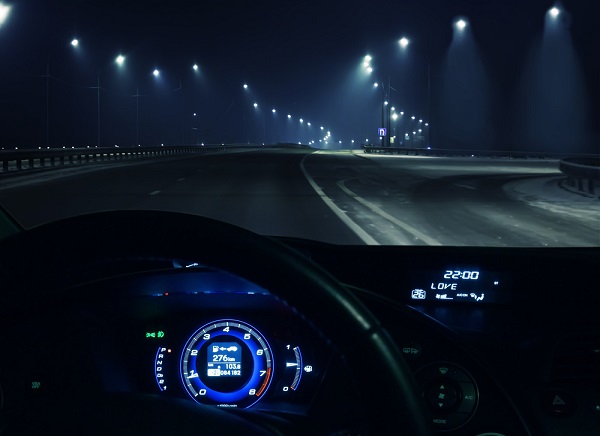
Development Overview
The road was originally illuminated by lighting wood, and later gradually developed into oil lamps, gas lamps, arc lamps, carbon filament incandescent lamps, and high-pressure mercury lamps. Today, the mainstream light source for road lighting is high-pressure sodium lamps. Based on the global energy-saving and emission-reduction policies, some new energy-saving light sources (such as LVD electrodeless lamps, LED lamps and new Somin xenon street lamps) have also been gradually applied to road lighting projects and have developed rapidly. In 1558, containers with turpentine or wooden strips were set up on the streets of Paris, and the turpentine or wooden strips were lit for lighting when it was dark. In the winter of 1667, oil lamps were used in some streets. In 1806, the streets of Baltimore, USA were illuminated with gas lamps. In 1842, the arc lamp appeared in Paris, and it was soon applied to the street. In 1878, the British J.W. Swan first proposed the use of carbon filament incandescent lamps. In 1932, the Dutch began to use low-pressure sodium lamps for street lighting. In 1935, the high-pressure mercury lamp was invented. In 1965, high-pressure sodium lamps came out and were used for road lighting. China first installed 10 gas lamps on Nanjing Road in Shanghai in 1865; 10 arc lamps were installed on the Bund in Shanghai in 1882; in 1890, Shanghai began to use incandescent lamps on the streets. In addition to adopting continuous lighting along the road on urban roads and continuous lighting on some highways or roads with heavy traffic, countries do not use continuous lighting on general roads due to economic benefits.
vision
At night, the driver perceives whether there is an obstacle on the road ahead by means of the brightness contrast between the obstacle and the road surface as the background. The average brightness of the road surface increases, the brightness contrast necessary to detect obstacles becomes smaller, and obstacles are easily found. If the brightness of objects and pedestrians on the road is darker than the background, the driver can only see their outlines, which is called outline recognition. During the driving process, the driver only cares about whether there are pedestrians or obstacles ahead, and does not need to identify who or what, so road lighting generally only needs to make the road surface have a certain brightness, increase the brightness difference between the object and the road surface, and the driver can outline Identify people or things. If the brightness of the object is greater than the brightness of the road surface, the driver can see a bright object in the darker background, which is inverse contour recognition. The diversion traffic island on the road needs to be easily recognized by the driver, so its surface brightness is increased to enable inverse contour recognition. When the object is brighter on the side facing the line of sight, the driver can only recognize the surface details on this side. To improve the driver’s ability to recognize details, the brightness of the surface of the object can be increased or the brightness can be changed through road lighting. Urban roads are the arteries of cities. The main lighting is street lights, which can meet the needs of pedestrians and vehicles at night. Garden lights, landscape lights and street lights form a three-dimensional lighting mode, which enhances the road decoration effect, beautifies the city landscape, and can also make up for the lack of street light illumination.
Quality Standard
Usually, the two indicators of the average illuminance and uniformity of the road surface are used. The unit of the former is lux, that is, the luminous flux of one lumen is evenly distributed on each square meter of horizontal irradiation area. The latter is the ratio of the minimum horizontal illuminance to the average horizontal illuminance. In fact, the brightness distribution of the road surface is quite different from the illuminance distribution. Using road surface illuminance as a road lighting index cannot give the real situation of visual perception conditions. Therefore, the International Commission on Illumination recommends that the quality of road lighting be measured by four indicators of road surface brightness, uniformity, glare and inductivity. Brightness is the amount of light reflected per unit area of the road surface, with cd/m2 as the unit. Uniformity is the uniformity of brightness distribution on the road surface. The uniformity that affects the driver’s visual comfort is equal to the ratio of the minimum brightness of the road surface on the driving line to the average brightness. Even if the average brightness is high, but the brightness distribution is uneven on the road surface, it is difficult to find obstacles in places with a large difference between light and dark. Glare is a phenomenon in which strong light hits the driver’s eyes directly, making the eyes uncomfortable, causing visual impairment, and making it difficult to see objects. The degree of glare that makes the eyes uncomfortable is evaluated by the glare index G, which expresses the subjective feeling. International Commission on Illumination recommends: G=1, unbearable; G=3, interference; G=5, allowable limit; G=7, relatively satisfactory; G=9, no influence. Glare is related to factors such as the brightness of the light source, the angle between the line of sight and the light source, and the average brightness of the road surface. Induction is to use lighting to inform the driver about the road ahead alignment, ups and downs, intersections, and traffic separation and integration. The International Commission on Illumination recommends that the pavement brightness of urban arterial roads and expressways be 2cd/m2, the longitudinal uniformity be 0.7, and G=6. Japan has adopted road brightness as a road lighting indicator. Most countries such as the United States still use illuminance as the road lighting standard. Illuminance and brightness can be converted into each other. The brightness of point P on the road surface is equal to the illuminance of the point multiplied by the brightness coefficient of the point.
lighting arrangement
Illuminators for road lighting include high-pressure sodium lamps, low-pressure sodium lamps, electrodeless lamps, metal halide lamps, fluorescent lamps, and new Somin xenon street lamps. Incandescent lamps, high-pressure mercury lamps, and low-pressure sodium lamps have been gradually eliminated due to defects in light source performance. The illuminator should use light energy reasonably to prevent glare. The light emitted by the illuminator should be irradiated at the required angle, and fall on the road surface to form a specified figure. The light distribution is uniform, the road surface is bright, and the glare is small. In order to reduce glare, the light distribution can be controlled above the maximum light intensity.
Illuminators for road lighting can be roughly divided into three types: cut-off, half-cut and non-cut. ① Cut-off type: The light emitted by the illuminator to the outside of the road width does not exceed 10% of the rated lumens of the light source, and the distribution of light along the road is controlled to produce less glare. Suitable for major streets, arterial roads and highways. ②Half-cut light type: the light emitted by the illuminator to the outside of the road width does not exceed 30% of the rated lumens of the light source, and the distribution of light along the road is controlled. Suitable for general grade streets. ③Non-cut-off type: The illuminator does not limit the luminous flux above the maximum light intensity, and the glare is large. It is only suitable for streets with bright surroundings or secondary streets with little traffic. The range of the illuminator is determined by the elevation angle of the beam. It is distinguished by the distance from the illuminator to the maximum candle beam irradiating the road surface. It can be divided into three types: short range, medium range and long range.
According to the road section form, width, and the conditions of vehicles and pedestrians, the illuminators can be arranged symmetrically on both sides of the road, staggered on both sides, on one side, double-fork on the separation island, and suspended in the middle of the road. High pole lighting is adopted in the road intersection area. Generally speaking, roads with a width of more than 20 meters and welcoming roads can be arranged symmetrically on both sides; roads with a width of more than 15 meters can be arranged staggered on both sides; narrower roads can be arranged on one side. In special places such as road intersections, curves, ramps, railway crossings, and crosswalks, illuminators are generally arranged to facilitate drivers and pedestrians to identify road conditions, and their brightness standards are also relatively high. In the lighting of the inner and outer sections of the tunnel and the transition section from urban streets to suburban roads, the adaptability of the driver’s eyes to light changes must be considered. The power, installation height, and longitudinal spacing of the illuminator are important parameters for light distribution design. Combining these three factors, you can get a satisfactory lighting effect.
lighting effect
The purpose of setting lighting on urban motor vehicle traffic roads is to create a good visual environment for motor vehicle drivers, in order to achieve the effects of ensuring traffic safety, improving transportation efficiency, reducing criminal activities and beautifying the urban night environment. The purpose of setting up lighting on pedestrian roads and roads in residential areas mainly used by pedestrians and non-motor vehicles is to provide pedestrians with a comfortable and safe visual environment, to ensure that pedestrians can clearly see the form of the road, the condition of the road surface, and whether there are obstacles; See clearly the vehicles that use the road at the same time and their driving conditions and intentions, so that you can understand the driving speed and direction of the vehicles, and judge the distance from the vehicles; Its action intention is convenient for people to communicate and can effectively prevent criminal activities; the road lighting in this area can also provide appropriate auxiliary lighting for the characteristics and iconic landscapes of residential areas and the building numbers of residential buildings, which is helpful for pedestrians Direction positioning and finding the target needs; In addition, the road lighting in the residential area helps to create a comfortable and pleasant night environment atmosphere.
lighting quality
- Illumination criterion
Illuminance is an objective physical quantity, which represents the luminous flux irradiated per unit area on the road. It can be seen that the value of illuminance has nothing to do with all the characteristics of the observer (such as vision, viewing angle, age, etc.) and the properties of the road surface, but is only related to the selection of lamps, the arrangement of lamps and the width of the road surface. Obviously, it is an amount invisible to the eye. Sometimes the illuminance is high, but the surface color is very dark, and it looks dark instead, not as bright as the surface with low illuminance but light color, which is prone to illusion and misleading; on the other hand, its calculation and measurement are very simple and accurate. easy to carry out.
Calculation: Its size can be calculated by using the inverse cubic theory of cosine; measurement: it can be measured very conveniently with an illuminance meter.
It is precisely because of this feature that it should be objective and applicable to use it as an evaluation indicator when there are many targets on the sidewalk and non-motorized vehicle roads, the observation direction and objects are uncertain, and the age and height of the observer are uncertain. . For this reason, all countries use it as a technical parameter for the assessment of lighting quality levels for non-motor vehicle lanes and pedestrian roads.
- Brightness requirements
The visual object of the motorway is the driver of the car, and what he sees is the road surface and the brightness of the road surface. Taking it as the criterion is an objective physical quantity that is closer to the actual situation seen by the eyes. The brightness of a certain point on the road is related to many factors, generally speaking, it is related to factors such as the driver’s distance from the observation point, the height of the eyes, the direction of sight observation, the viewing angle, the road surface material (reflection characteristics), and the wet conditions on the road surface. The status or data of these factors all affect the brightness data and subjective feeling of the road surface, which is a far more complex physical quantity than illuminance. It more realistically reflects what the eye sees and expresses how the eye feels.
Therefore, all countries in the world use brightness as an index to measure and calculate in the evaluation of road lighting. Therefore, the above-mentioned variables are unified or standardized in order to produce a unified evaluation and calculation method.
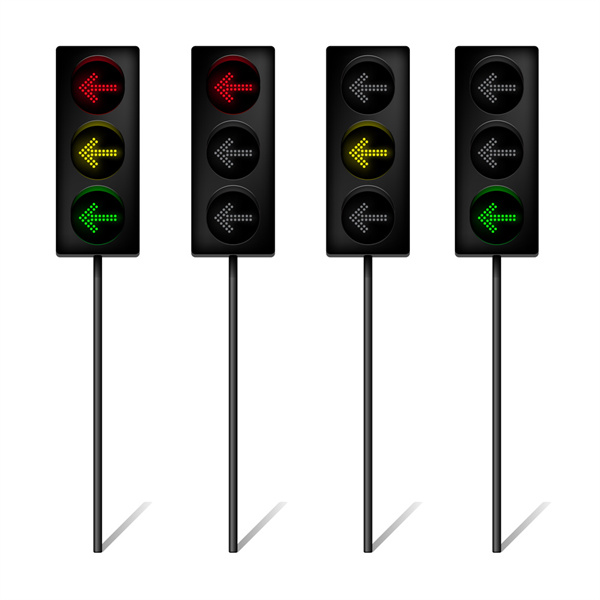
light source selection
The selection of electric light sources for road lighting should first meet the requirements of road grade contrast (or brightness), and then meet the requirements of high light efficiency and long life. On general roads or squares, color rendering index and color temperature are not considered.
From the perspective of light effect, the electric light source is selected, and its arrangement order is low-pressure sodium lamp, high-pressure sodium lamp, high-pressure mercury lamp, self-ballasted high-pressure mercury lamp, and incandescent lamp. The electric light source is selected from the perspective of life, and its arrangement order is high-pressure mercury lamp, high-pressure sodium lamp, (externally triggered high-pressure sodium lamp and internally triggered high-pressure sodium lamp), low-pressure sodium lamp, self-ballasted high-pressure mercury lamp, and incandescent lamp.
Among the gas discharge lamps, the low-pressure sodium lamp has the highest luminous efficiency, and its luminous effect is 150 lm/W, while the high-pressure mercury lamp is only 50 lm/W, and the high-pressure sodium lamp is 100 lm/W. It can be seen that replacing high-pressure mercury lamps with low-pressure sodium lamps can save 66% of electricity. There are many suitable occasions for low-pressure sodium lamps, and they are generally more suitable for use on suburban roads. For example, ND18 bulbs can be made to ignite in any direction, and cooperate with impedance ballasts. The average service life in Beijing has reached more than 4000h to replace a large number of The use of incandescent bulbs is promising and more applicable. Self-ballasted high-pressure mercury lamps are not suitable for road lighting due to short life and low luminous efficiency, and their production and use should be strictly limited in various occasions.
There is a problem
(1) The problem of LED application standards in road lighting.
As a new light source, there is no unified mandatory standard for LED road lighting standards in China, but this does not mean that there is no standard for road lighting applications. Motor vehicle road lighting is designed for the driver’s visual work. LED road lighting should use the “brightness standard” in the “Urban Road Lighting Design Standard” cJJ45-2006, that is, the average brightness of the road surface, the total uniformity of the road surface brightness, and the longitudinal uniformity. , glare limit, environmental ratio and inductivity are used as evaluation indicators. Some semiconductor experts and street lamp companies hype the illuminance uniformity of LED street lamps and the uniform illuminance formed by rectangular light spots, which are widely spread, causing misleading and wasting a lot of manpower, financial and material resources. In fact, they do not really understand the needs of road lighting. Nature.
(2) The color rendering index and color temperature of LED in road lighting.
The color rendering index of traditional light sources is similar to the ftr index CRI, which is actually not suitable for #f: Rtr high color saturation LED light sources. The value of CRI of LED light source is low and the light color quality can be very good. On the contrary, a high CRI value does not necessarily guarantee a good color light quality. For LED road lighting, the color rendering evaluation standard CRI formulated by traditional lighting based on the theory of black body radiation has great limitations.
(3) The spectrum of LEDs is a problem for human health and safety.
LEDs emit a lot of blue light, and the human eye has poor absorption of blue light and is prone to glare. At the same time, blue light may inhibit the body’s production of melatonin, which helps people fall asleep. Melatonin is a very important neuroendocrine hormone, which can regulate people’s circadian rhythm (biological clock), make people adapt to changes in the external environment, and other effects such as sedation, hypnosis, immunity, excitement, anti-aging, and anti-tumor are being studied. Therefore, the evaluation of the quality of lighting sources should not only be based on visual cognition, but should be evaluated from two aspects of visual cognition and non-visual perception, and the impact of non-visual effects should be studied in depth.
(4) Vicious competition of LED road lighting products and actual energy saving issues.
The LED road lighting market is the sweet spot in the eyes of every LED company, but the impulsive behavior of users blindly purchasing at low prices for a period of time is paying a painful price. Many LED application companies invest blindly and are eager for quick success. They just buy modules and assemble them, not to mention innovation. Some application companies with R&D investment also carry out repetitive research and development on heat dissipation, optics, structure, electricity and other technologies, and research on lighting science and the impact of light on people is even more out of the question. Many companies generally repeat the research and development of common technologies, resulting in waste of resources and high product costs, and then the “vicious circle” affects the application market development. Inferior-quality LED products are flooding the market, and many companies are unable to improve their technological content. In the process of price competition, my country’s LED industry has gone downhill.


